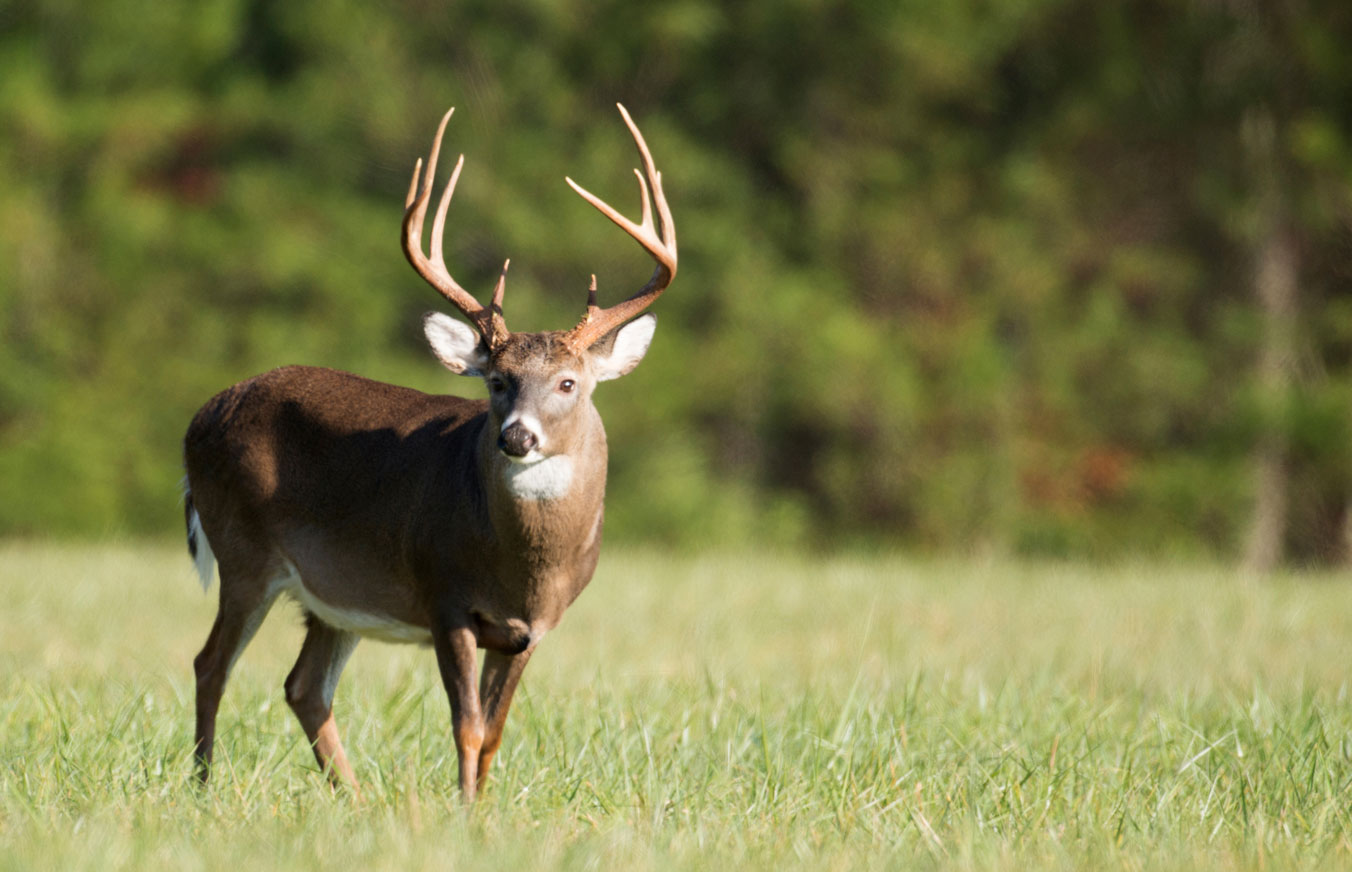Native plant species are suffering thanks to hungry deer grazing them down, while these same deer herds neglect to devour competing invasive plants in the same way. So by rejecting invasive plant species, deer inadvertently promote their success.
This is in part because deer find invasive plants unappetizing, but also because deer lack enough hunters to keep their numbers in check.
Essentially, this is about ecology, the study of how each form of life is dependent on other living things and the natural resources in a given environment. Here then is an example of the interconnectivity of nature: It's a nice idea to let all deer live and prosper and grow old together, Bambi-style. Except for this, nature's little hiccup of a rule: what the environment gains in one area can only be logged as a loss in another.
The silver lining, perhaps, is nothing brings naturalists together on the benefits of hunting as does the threat that one species might be devastating another. The Smithsonian Insider reports, "The eating preferences of the hordes of whitetail deer now living in the eastern United States is gradually altering the traditional composition of plant species in its forests, lowering the diversity of native plants while giving a boost to invasive populations."
As you well know, whitetail deer are native to the Eastern U.S. And because of this, they are interdependent on their natural habitat and they rely on the plants indigenous to this habitat. Naturally, as the basics of ecology go, they're not likely to seek out invasive plants for sustenance. These plant species are not indigenous to their natural habitat.
(Disclaimer: Japanese honeysuckle is abundant in a large part of whitetail country. Although it is a non-native, invasive plant, it is high in protein and a valuable mid-winter food source for deer.)

What's the fix to stop invasive species from crowding out native plants? The question is one of importance because native plant life is essential to eastern forestland and the sustainability of wildlife habitat. Photo: iStock
“Overall, deer reduce community diversity, lowering native plant richness and abundance and benefiting certain invasive plants, showing that deer have a pervasive impact on forest understory plant communities across broad swaths of the eastern U.S.,” says Kristine Averill, a research associate in Cornell’s Section of Soil and Crop Sciences.
Averill is also the lead author of a recent paper published in the online journal AoB Plants, which cites research concerning deer and the animal's relationship to thriving, invasive plants. The paper's findings were based on a study conducted by scientists from Pennsylvania State University, Cornell University, the Smithsonian Conservation Biology Institute, the Smithsonian Environmental Research Center, Hood College, the University of Tennessee and others research organizations.
Once the natural balance is disrupted, a string of actions and reactions are set into motion and this changes forest plant ecology. So take for instance other native animals reliant on the same forest ecology. With native plants being elbowed out by thriving invasive plants and deer populations dominating the food sources available, other animals like wild turkeys can suffer.
These events can also have long-term impacts on forest regeneration including stressors to native oak trees.
“Oaks need light coming down to the forest floor, but a lot of time the canopy is closed,” Bill McShea, a wildlife ecologist at the Smithsonian Conservation Biology Institute, told the Smithsonian Insider. "They would benefit from fire going through those woods, but there is no fire. Then there are the deer which love oak seedlings and acorns. Oaks have multiple stressors.”
What to do?
Well, hunting was mentioned in the published paper. In areas where hunting is common, particularly in rural regions of the Eastern U.S., deer populations are often kept in check. But in most areas of the U.S. there are not enough hunters to get the job done. The U.S. Fish and Wildlife Service reported last fall that about 5 percent of Americans, 16 years old and older, actually hunt. That's half of what it was 50 years ago and the decline is expected to accelerate over the next decade.
“The study results suggest we should try to maintain lower deer densities through hunting and fencing if the goals are to support more native plants and foster a reduced relative abundance of introduced plants,” Averill says in the published paper of study outcomes.
BONUS: About Kudzu, Possibly the Most Well-Known Invasive Plant
Arrival: Japan introduced Kudzu to the U.S. at the Philadelphia Centennial Exposition in 1876. It was first promoted as an ornamental plant and later as a forage crop in the Southeast. One million acres of Kudzu were planted in the 1930s and 1940s by the Soil Conservation Service to reduce soil erosion on deforested lands. It was not until the 1950s that it was recognized as an invasive.
Impact: Once established, Kudzu grows at a rate of up to one foot a day and 60 feet annually. This vigorous vine takes over areas in the Southeast by smothering plants and kills trees by adding immense weight and girdling or toppling them.
— Smithsonian Insider
Featured photo: Kudzu, by Kerry Britton, USDA Forest Service, Bugwood.org






